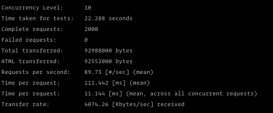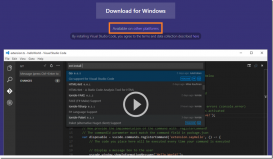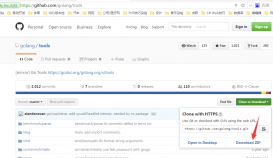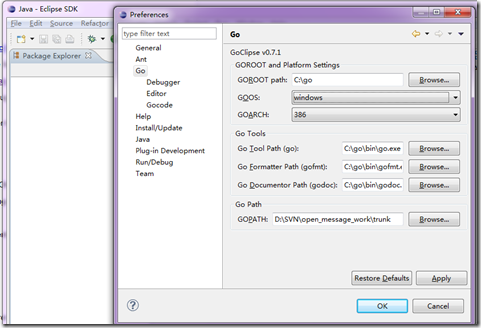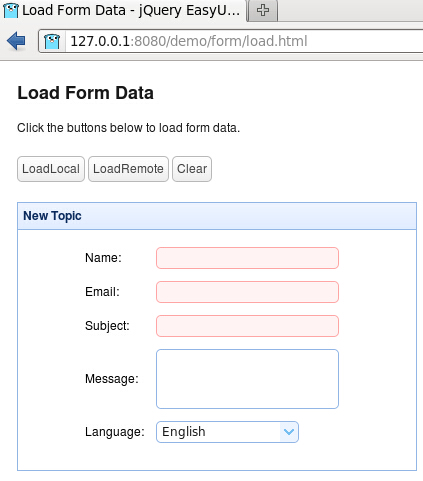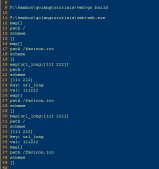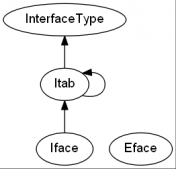大家好,我是程序员幽鬼。
gRPC 越来越流行,相关的插件也很多,今天介绍的就是一个 gRPC 插件。
gRPC-Gateway 是一个插件,它为 gRPC 服务生成反向代理服务器,将 Restful/JSON 转换为 gRPC,反之亦然。
换句话说,gRPC-Gateway 将在你的 gRPC 服务上创建一个层,该层将充当客户端的 Restful/JSON 服务。gRPC-Gateway 从 gRPC 服务的 Protocol Buffer 的定义生成代码。
1.介绍
gRPC-Gateway 是 protoc 的插件,将从 gRPC 定义生成 Go 代码。
生成的代码可以用作独立服务器或安装在现有代码库上。gRPC-Gateway 是高度可定制的,支持从 protoc 文件生成开放 API 文档。
在本教程指南中,我们将详细介绍独立服务器以及与现有代码的集成。查看此流程图以了解 gRPC 网关的工作原理。
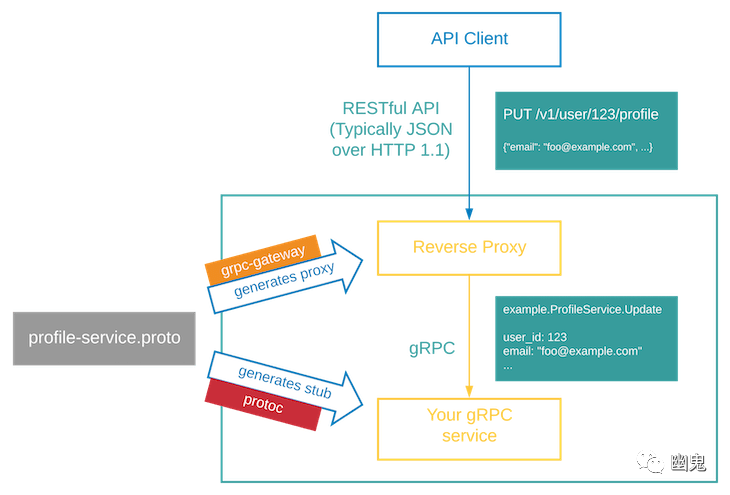
gRPC-Gateway flowchart diagram
2.为什么选择 gRPC-Gateway?
gRPC 网关为 gRPC 服务构建代理,该代理充当客户端的 Restful/JSON 应用程序。它开启了使用相同代码库同时支持 Restful/JSON 和 gRPC 的可能性。有两个主要的场景:
- 旧版客户端可能不支持 gRPC 并需要 Restful/JSON 接口
- 浏览器可能不支持开箱即用的 gRPC;因此对于想要与 gRPC 服务交互的 Web 客户端,gRPC-Gateway 是首选选项。
最常见的 gRPC-Gateway 模式是创建单个 gRPC 网关服务器(可能在多台机器上运行),作为客户端的代理与多个 gRPC 服务交互。
下图解释了此服务的工作原理。
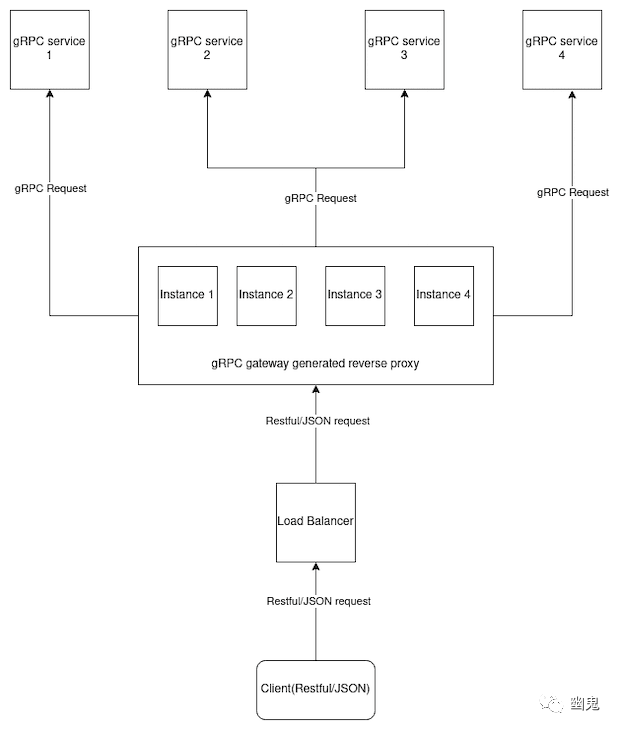
gRPC-Gateway and service requests flowchart diagram
gRPC 网关生成的反向代理被水平扩展以在多台机器上运行,并且在这些实例之前使用负载均衡器。单个实例可以托管多个 gRPC 服务的反向代理。
3.设置 gRPC 网关
gRPC-Gateway 是 protoc 的插件。在使用它之前,必须在系统上安装 protocol buffer 编译器。按照官方 gRPC 网站[1]上的指南,根据你使用的操作系统在你的系统上安装 protoc。
gRPC-Gateway 使用并生成 Go 代码。要安装 Go,请按照官方[2]网站上的指南进行操作。只要你的系统上安装了 Go,你就可以安装 gRPC-Gateway 插件了。
创建一个名为 grpc-gateway-demo 的目录,该目录将保存 gRPC-Gateway 项目。为了构建 protocol buffer 和生成 gRPC 网关反向代理,将使用 Buf。你可以按照官方网站[3]上的指南安装 Buf 。
项目结构
所有的 Protocol Buffers 文件都将在 proto目录中,而 Go 文件将在 root。要设置 Go 项目,请使用 go mod init grpc-gateway-demo 并创建一个 main.go 文件。你的项目应如下所示:
├── main.go ├── go.mod └── proto
配置 BufBuf
需要三个不同的文件来生成存根和反向代理。
buf.gen.yaml
这些文件指定编译器应该使用的所有插件和相关选项。
使用 Buf,你可以简单地在 YAML 文件中指定名称和选项。Buf 还允许构建代码使用远程插件(即,指定的插件将在构建过程中由 Buf 自动下载并由本地系统上的 Buf 维护)。
version: v1 plugins: # generate go structs for protocol buffer defination - remote: buf.build/library/plugins/go:v1.27.1-1 out: gen/go opt: - paths=source_relative # generate gRPC stubs in golang - remote: buf.build/library/plugins/go-grpc:v1.1.0-2 out: gen/go opt: - paths=source_relative # generate reverse proxy from protocol definations - remote: buf.build/grpc-ecosystem/plugins/grpc-gateway:v2.6.0-1 out: gen/go opt: - paths=source_relative # generate openapi documentation for api - remote: buf.build/grpc-ecosystem/plugins/openapiv2:v2.6.0-1 out: gen/openapiv2
buf.yaml
该文件应位于所有 proto 文件的根目录中。这些文件指定编译 proto 文件(例如 Google API)所需的依赖项。
version: v1 deps: # adding well known types by google - buf.build/googleapis/googleapis
buf.work.yaml
此文件指定工作空间中包含 Protocol Buffer 定义的所有文件夹/目录。
version: v1 directories: - proto
完成后,你的项目结构应与此类似:
├── buf.gen.yaml ├── buf.work.yaml ├── go.mod ├── main.go └── proto ├── buf.yaml
在项目根目录中你可以通过运行 buf build 命令来测试你的配置。
4.使用 gRPC 网关
到目前为止,你已将 gRPC-Gateway 设置为插件,但现在出现的问题是如何定义基本的 API 规范,如 HTTP 方法、URL 或请求正文。
为了定义这些规范选项在 Protocol Buffers 上的 rpc 方法定义中使用的 service 内容,下面的示例将使其更加清晰。
proto/hello/hello_world.proto:
// define syntax used in proto file syntax = "proto3"; // options used by gRPC golang plugin(not related to gRPC gateway) option go_package = "github.com/anshulrgoyal/grpc-gateway-demo;grpc_gateway_demo"; // well know type by google, gRPC gateway uses HTTP annotation. import "google/api/annotations.proto"; package hello_world; // simple message message HelloRequest { string name = 1; } message HelloReply { string message = 1; } // a gRPC service service Greeter { // SayHello is a rpc call and a option is defined for it rpc SayHello (HelloRequest) returns (HelloReply) { // option type is http option (google.api.http) = { // this is url, for RESTfull/JSON api and method // this line means when a HTTP post request comes with "/v1/sayHello" call this rpc method over this service post: "/v1/sayHello" body: "*" }; } }
option关键字用于为 Rest 请求添加规范。选择该 option 方法并指定该请求的路径。
在上面的例子中,post 是请求的 HTTP 方法,/v1/sayHello 是响应。
你现在可以在项目根目录中使用 buf generate 命令来构建代码。
命令完成后,项目的根目录中应该有一个 gen 目录,里面有 Go 代码。这些文件包含 gRPC 和 gRPC 网关反向代理的存根。openapiv2 包含 Swagger UI 的开放 API 文档。
gen |-- go | `-- hello | |-- hello_world.pb.go | |-- hello_world.pb.gw.go | `-- hello_world_grpc.pb.go `-- openapiv2 `-- hello `-- hello_world.swagger.json
实现服务
本教程将在 Go 中实现 gRPC 服务器。任何 gRPC 实现对于 gRPC 网关都可以正常工作。
使用 Go 的优点是你可以在同一进程中运行 gRPC 服务和 gRPC-Gateway 生成的代码。这是 Go 的 Greeter 服务实现。
sever/main.go:
package main import ( "context" "fmt" "log" "net" // importing generated stubs gen "grpc-gateway-demo/gen/go/hello" "google.golang.org/grpc" ) // GreeterServerImpl will implement the service defined in protocol buffer definitions type GreeterServerImpl struct { gen.UnimplementedGreeterServer } // SayHello is the implementation of RPC call defined in protocol definitions. // This will take HelloRequest message and return HelloReply func (g *GreeterServerImpl) SayHello(ctx context.Context, request *gen.HelloRequest) (*gen.HelloReply, error) { return &gen.HelloReply{ Message: fmt.Sprintf("hello %s",request.Name), },nil } func main() { // create new gRPC server server := grpc.NewServer() // register the GreeterServerImpl on the gRPC server gen.RegisterGreeterServer(server, &GreeterServerImpl{}) // start listening on port :8080 for a tcp connection if l, err := net.Listen("tcp", ":8080"); err != nil { log.Fatal("error in listening on port :8080", err) } else { // the gRPC server if err:=server.Serve(l);err!=nil { log.Fatal("unable to start server",err) } } }
上述文件是 gRPC 服务的基本实现。它侦听端口 8080。你可以在任何 gRPC 客户端上对其进行测试。
在 gRPC 网关代理上注册服务
gRPC 网关代理支持的每个 gRPC 服务器都需要在其上进行注册。
在底层,gRPC 网关服务器将创建一个 gRPC 客户端并使用它向提供的端点发出 gRPC 请求。你可以提供各种 DailOptions 注册函数。
proxy/main.go
package main import ( "context" "log" "net" "net/http" "github.com/grpc-ecosystem/grpc-gateway/v2/runtime" "google.golang.org/grpc" gen "grpc-gateway-demo/gen/go/hello" ) func main() { // creating mux for gRPC gateway. This will multiplex or route request different gRPC service mux:=runtime.NewServeMux() // setting up a dail up for gRPC service by specifying endpoint/target url err := gen.RegisterGreeterHandlerFromEndpoint(context.Background(), mux, "localhost:8080", []grpc.DialOption{grpc.WithInsecure()}) if err != nil { log.Fatal(err) } // Creating a normal HTTP server server:=http.Server{ Handler: mux, } // creating a listener for server l,err:=net.Listen("tcp",":8081") if err!=nil { log.Fatal(err) } // start server err = server.Serve(l) if err != nil { log.Fatal(err) } }
ServerMux 是一个多路复用器,它将根据 JSON/Restful 请求的路径将请求路由到各种注册服务。
grpc.WithInsecure() dial 选项用于允许服务在不使用身份验证的情况下连接到 gRPC 。localhost:8080 是一个 gPRC 服务正在运行的 URL - 因为 Greet(gRPC 服务构建之前看到)服务正在端口 8080 上运行,所以 localhost:8080 被使用。
一旦注册了处理程序,mux 就可以处理 HTTP 请求了。在这里,http 包中的 Go 标准 HTTP 服务器被使用。你也可以自由地使用其他实现,本文稍后将通过 gRPC 网关代理使用 Gin 来演示这一点[4]。
ServerMux 实现 ServeHTTP 接口——它可以像Handler在 HTTP 服务器中一样使用。服务在 8081 端口上运行。
要启动服务,只需在项目目录的根目录中运行 go run proxy/main.go 。
使用路径参数
现在,如果你想让 v1/sayHello API 在 POST 调用中成为 GET 调用并将数据作为路径参数传递,那么在完成 gRPC 网关设置后,你无需更改代码中的任何内容 — 只需更改协议缓冲区定义并重新生成存根,你都可以使用新的 API。
message HelloRequest { string name = 1; } service Greeter { rpc SayHello (HelloRequest) returns (HelloReply) { option (google.api.http) = { get:"/v1/sayHello/{name}" }; } }
上述代码段中提供的路径是 /v1/sayHello/{name}。你可以使用请求有效负载(HelloRequest 在本例中)中的任何键作为路径参数。如果你使用带有 path 的 GET 请求/v1/sayHello/jane,该请求将被路由到 Greeter.sayHello gRPC 调用。你可以在 URL 中使用任意数量的路径参数。
现在你对 gRPC 网关及其设置有了一些基本的了解。
我们使用的示例只是对 gRPC 网关的介绍,但要在生产环境中运行某些东西,你需要进行日志记录、跟踪和错误处理。
5.常见的使用模式
对于任何准备好用于生产的系统,它都应该有一些错误处理并允许某种错误日志记录。
添加日志记录
本文的这一部分将演示如何将中间件与 gRPC 网关生成的代理一起使用。
ServerMux 实现了一个 Handler 接口,因此你可以使用任何中间件来包装 ServerMux 和记录传入和输出请求。
type Handler interface { ServeHTTP(ResponseWriter, *Request) }
要创建用于日志记录的中间件,你可以从 *Request 中提取与 HTTP 请求相关的信息,并从正在使用的 httpsnoop 包中提取有关响应的信息。
func withLogger(handler http.Handler) http.Handler { // the create a handler return http.HandlerFunc(func(writer http.ResponseWriter, request *http.Request) { // pass the handler to httpsnoop to get http status and latency m:=httpsnoop.CaptureMetrics(handler,writer,request) // printing exracted data log.Printf("http[%d]-- %s -- %s\n",m.Code,m.Duration,request.URL.Path) }) }
该 withLogger 方法将封装 Handler 接口并调用 snoop 以提取信息。在后台,该 ServerHTTP 方法由 httpsnoop 包调用。
server := http.Server{ Handler: withLogger(mux), }
这与 Go 生态系统中使用的任何其他处理程序没有什么不同。由于 ServerMux 是一个普通的处理程序,任何可用的中间件也可以与 gRPC 网关生成的反向代理一起使用。
错误处理
gRPC 网关已经带有将 gRPC 错误代码转换为客户端使用的 HTTP 状态的映射。例如,它会自动将众所周知的和使用过的 gRPC 代码映射到 HTTP 状态。
InvalidArgument 转换为 400(错误请求)。如需完整列表,你可以查看此链接[5]。如果你有自定义要求,例如需要非常规状态代码,则可以使用 WithErrorhandler 带有错误处理函数的选项——所有错误都将通过请求和响应编写器传递给该函数。
runtime.WithErrorHandler( func(ctx context.Context, mux *runtime.ServeMux, marshaler runtime.Marshaler, writer http.ResponseWriter, request *http.Request, err error) {} )
错误处理函数获取以下参数:
- ctx:上下文,保存有关执行的元数据
- mux:这是 ServerMux;它保存有关服务器的配置数据,例如应将哪个标头传递给响应
- marshaler:将 Protocol Buffer 响应转换为 JSON 响应
- writer:这是客户端的响应编写器
- request:这请求包含客户端发送的信息的对象
- err:gRPC 服务发送的错误
这是一个简单的 WithErrorHandler 例子。在此示例中,无论错误如何,发生错误时请求的 HTTP 状态都会更改为 400。
mux: = runtime.NewServeMux( runtime.WithErrorHandler(func(ctx context.Context, mux *runtime.ServeMux, marshaler runtime.Marshaler, writer http.ResponseWriter, request *http.Request, err error) { //creating a new HTTTPStatusError with a custom status, and passing error newError:=runtime.HTTPStatusError{ HTTPStatus: 400, Err: err, } // using default handler to do the rest of heavy lifting of marshaling error and adding headers runtime.DefaultHTTPErrorHandler(ctx,mux,marshaler,writer,request,&newError) }))
通过创建一个新错误并将其传递给 DefaultHTTPErrorHandler。重要的是要注意,DefaultHTTPErrorHandler 在将错误转换为有效的 JSON 响应时,在后台执行了大量工作——尽可能尝试使用它。
HTTP 头和 gRPC 元数据
gRPC 和 Restful/JSON 以不同的方式传递元数据。
在 Restful/JSON HTTP 中,标头用于发送 HTTP 头,而 gRPC 通过根据所使用的语言提供元数据接口来抽象发送元数据。
gRPC 网关提供了一个简单的映射接口来将 gRPC 元数据转换为 HTTP 标头,反之亦然。它还允许使用两种不同的方法来处理标头到元数据的转换。
首先,WithOutgoingHeaderMatcher 处理从 gRPC 网关返回到客户端的标头。它将元数据转换为 HTTP 标头(即,任何由 gRPC 服务传递的元数据都将作为 HTTP 标头发送回客户端)。
var allowedHeaders=map[string]struct{}{ "x-request-id": {}, } func isHeaderAllowed(s string)( string,bool) { // check if allowedHeaders contain the header if _,isAllowed:=allowedHeaders[s];isAllowed { // send uppercase header return strings.ToUpper(s),true } // if not in the allowed header, don't send the header return s, false } // usage mux:=runtime.NewServeMux( // convert header in response(going from gateway) from metadata received. runtime.WithOutgoingHeaderMatcher(isHeaderAllowed))
此方法接受一个字符串,如果将标头传递给客户端,则返回 true,否则返回 false。
其次,WithMetadata处理传入的 HTTP 标头(即 cookie、内容类型等)。它最常见的用例是获取身份验证令牌并将其传递给元数据。此处提取的 HTTP 标头将在元数据中发送到 gRPC 服务。
mux := runtime.NewServeMux( // handle incoming headers runtime.WithMetadata(func(ctx context.Context, request *http.Request) metadata.MD { header := request.Header.Get("Authorization") // send all the headers received from the client md := metadata.Pairs("auth",header) return md }),
它接受一个请求并返回元数据的函数。请注意转换为元数据的标头,因为客户端、浏览器、负载均衡器和 CDN 都在其中。gRPC 的密钥也有一些限制。
这是一个完整的例子:
package main import ( "context" "log" "net" "net/http" "strings" "github.com/felixge/httpsnoop" "github.com/grpc-ecosystem/grpc-gateway/v2/runtime" "google.golang.org/grpc" "google.golang.org/grpc/metadata" gen "grpc-gateway-demo/gen/go/hello" ) func withLogger(handler http.Handler) http.Handler { return http.HandlerFunc(func(writer http.ResponseWriter, request *http.Request) { m:=httpsnoop.CaptureMetrics(handler,writer,request) log.Printf("http[%d]-- %s -- %s\n",m.Code,m.Duration,request.URL.Path) }) } var allowedHeaders=map[string]struct{}{ "x-request-id": {}, } func isHeaderAllowed(s string)( string,bool) { // check if allowedHeaders contain the header if _,isAllowed:=allowedHeaders[s];isAllowed { // send uppercase header return strings.ToUpper(s),true } // if not in the allowed header, don't send the header return s, false } func main() { // creating mux for gRPC gateway. This will multiplex or route request different gRPC service mux := runtime.NewServeMux( // convert header in response(going from gateway) from metadata received. runtime.WithOutgoingHeaderMatcher(isHeaderAllowed), runtime.WithMetadata(func(ctx context.Context, request *http.Request) metadata.MD { header:=request.Header.Get("Authorization") // send all the headers received from the client md:=metadata.Pairs("auth",header) return md }), runtime.WithErrorHandler(func(ctx context.Context, mux *runtime.ServeMux, marshaler runtime.Marshaler, writer http.ResponseWriter, request *http.Request, err error) { //creating a new HTTTPStatusError with a custom status, and passing error newError:=runtime.HTTPStatusError{ HTTPStatus: 400, Err: err, } // using default handler to do the rest of heavy lifting of marshaling error and adding headers runtime.DefaultHTTPErrorHandler(ctx,mux,marshaler,writer,request,&newError) })) // setting up a dail up for gRPC service by specifying endpoint/target url err := gen.RegisterGreeterHandlerFromEndpoint(context.Background(), mux, "localhost:8080", []grpc.DialOption{grpc.WithInsecure()}) if err != nil { log.Fatal(err) } // Creating a normal HTTP server server:=http.Server{ Handler: withLogger(mux), } // creating a listener for server l,err:=net.Listen("tcp",":8081") if err!=nil { log.Fatal(err) } // start server err = server.Serve(l) if err != nil { log.Fatal(err) } }
查询参数
默认支持查询参数。你可以使用消息定义中的相同键将它们添加到路径中。因此,如果你 HelloResponse 中有一个名为 last_name 的密钥,你可以输入路径 v1/sayHello/anshul?last_name=goyal 而无需更改网关代码中的任何内容。
自定义响应gRPC-Gateway 允许你在原始案例或 camelCase 中自定义响应中的键。。默认情况下它是 camelCase,但你可以编辑 Marshaler 配置来更改它。
mux := runtime.NewServeMux(runtime.WithMarshalerOption(runtime.MIMEWildcard, &runtime.HTTPBodyMarshaler{ Marshaler: &runtime.JSONPb{ MarshalOptions: protojson.MarshalOptions{ UseProtoNames: true, EmitUnpopulated: true, }, UnmarshalOptions: protojson.UnmarshalOptions{ DiscardUnknown: true, }, }, }),)
6.将 gRPC-Gateway 与 Gin 一起使用
Gin 是一个非常流行的 Go web 框架。你可以将 gRPC-Gateway 与 Gin 一起使用,因为它只是一个处理程序。它将允许你在你的服务器上添加可能不是由 gRPC-Gateway 生成的其他路由。
package main import ( "context" "log" "net/http" "strings" "github.com/gin-gonic/gin" "github.com/grpc-ecosystem/grpc-gateway/v2/runtime" "google.golang.org/grpc" "google.golang.org/grpc/metadata" gen "grpc-gateway-demo/gen/go/hello" ) var allowedHeaders=map[string]struct{}{ "x-request-id": {}, } func isHeaderAllowed(s string)( string,bool) { // check if allowedHeaders contain the header if _,isAllowed:=allowedHeaders[s];isAllowed { // send uppercase header return strings.ToUpper(s),true } // if not in the allowed header, don't send the header return s, false } func main() { // creating mux for gRPC gateway. This will multiplex or route request different gRPC service mux:=runtime.NewServeMux( // convert header in response(going from gateway) from metadata received. runtime.WithOutgoingHeaderMatcher(isHeaderAllowed), runtime.WithMetadata(func(ctx context.Context, request *http.Request) metadata.MD { header:=request.Header.Get("Authorization") // send all the headers received from the client md:=metadata.Pairs("auth",header) return md }), runtime.WithErrorHandler(func(ctx context.Context, mux *runtime.ServeMux, marshaler runtime.Marshaler, writer http.ResponseWriter, request *http.Request, err error) { //creating a new HTTTPStatusError with a custom status, and passing error newError:=runtime.HTTPStatusError{ HTTPStatus: 400, Err: err, } // using default handler to do the rest of heavy lifting of marshaling error and adding headers runtime.DefaultHTTPErrorHandler(ctx,mux,marshaler,writer,request,&newError) })) // setting up a dail up for gRPC service by specifying endpoint/target url err := gen.RegisterGreeterHandlerFromEndpoint(context.Background(), mux, "localhost:8080", []grpc.DialOption{grpc.WithInsecure()}) if err != nil { log.Fatal(err) } // Creating a normal HTTP server server:=gin.New() server.Use(gin.Logger()) server.Group("v1/*{grpc_gateway}").Any("",gin.WrapH(mux)) // additonal route server.GET("/test", func(c *gin.Context) { c.String(http.StatusOK,"Ok") }) // start server err = server.Run(":8081") if err != nil { log.Fatal(err) } }
只需使用 gin.WrapH 带有通配符路径的方法,你就可以在服务器上使用 gin 了。如果需要,它允许你添加到服务器的路由。你还可以使用 HandlePath 将路由直接添加到 ServerMux 。
err = mux.HandlePath("GET", "test", func(w http.ResponseWriter, r *http.Request, pathParams map[string]string) { w.Write([]byte("ok") })
7.在同一端口上运行反向代理和 gRPC 服务
可以在一个端口上运行这两种服务。你可以通过使用 cmux 包来做到这一点。
cmux 将通过区分使用的协议来拆分 gRPC 流量和 RestFull/JSON,因为 gRPC 将使用 HTTP2,而 RestFull/JSON 将使用 HTTP1。
package main import ( "context" "fmt" "log" "net" "net/http" "github.com/felixge/httpsnoop" "github.com/grpc-ecosystem/grpc-gateway/v2/runtime" "github.com/soheilhy/cmux" // importing generated stubs gen "grpc-gateway-demo/gen/go/hello" "google.golang.org/grpc" ) // GreeterServerImpl will implement the service defined in protocol buffer definitions type GreeterServerImpl struct { gen.UnimplementedGreeterServer } // SayHello is the implementation of RPC call defined in protocol definitions. // This will take HelloRequest message and return HelloReply func (g *GreeterServerImpl) SayHello(ctx context.Context, request *gen.HelloRequest) (*gen.HelloReply, error) { if err:=request.Validate();err!=nil { return nil,err } return &gen.HelloReply{ Message: fmt.Sprintf("hello %s %s",request.Name,request.LastName), },nil } func main() { // create new gRPC server grpcSever := grpc.NewServer() // register the GreeterServerImpl on the gRPC server gen.RegisterGreeterServer(grpcSever, &GreeterServerImpl{}) // creating mux for gRPC gateway. This will multiplex or route request different gRPC service mux:=runtime.NewServeMux() // setting up a dail up for gRPC service by specifying endpoint/target url err := gen.RegisterGreeterHandlerFromEndpoint(context.Background(), mux, "localhost:8081", []grpc.DialOption{grpc.WithInsecure()}) if err != nil { log.Fatal(err) } // Creating a normal HTTP server server:=http.Server{ Handler: withLogger(mux), } // creating a listener for server l,err:=net.Listen("tcp",":8081") if err!=nil { log.Fatal(err) } m := cmux.New(l) // a different listener for HTTP1 httpL := m.Match(cmux.HTTP1Fast()) // a different listener for HTTP2 since gRPC uses HTTP2 grpcL := m.Match(cmux.HTTP2()) // start server // passing dummy listener go server.Serve(httpL) // passing dummy listener go grpcSever.Serve(grpcL) // actual listener m.Serve() } func withLogger(handler http.Handler) http.Handler { return http.HandlerFunc(func(writer http.ResponseWriter, request *http.Request) { m:=httpsnoop.CaptureMetrics(handler,writer,request) log.Printf("http[%d]-- %s -- %s\n",m.Code,m.Duration,request.URL.Path) }) }
8.结论
本教程解释了为你的 gRPC 服务构建出色的 gRPC-Gateway 反向代理所需的所有要素。
自 gRPC-Gateway 以来,ServerMux 现在只是一个处理程序,你可以通过添加更多中间件(如主体压缩、身份验证和恐慌处理)来构建它。
你还可以使用 gRPC 网关配置。所有的代码示例都可以在这里[6]找到。
原文链接:https://dev.to/logrocket/an-all-in-one-guide-to-grpc-gateway-4g11
参考资料:
[1]官方 gRPC 网站: https://grpc.io/docs/protoc-installation/
[2]官方: https://go.dev/doc/install
[3]你可以按照官方网站: https://docs.buf.build/installation
[4]使用 Gin 来演示这一点: https://blog.logrocket.com/building-microservices-go-gin/
[5]链接: https://github.com/grpc-ecosystem/grpc-gateway/blob/7094a052b3287b9e99f52d95230789ab34d2d7c4/runtime/errors.go#L36
[6]这里: https://github.com/anshulrgoyal/grpc-gateway-demo
原文地址:https://mp.weixin.qq.com/s/uUj2eIoDnpss2RvzovhqKQ



